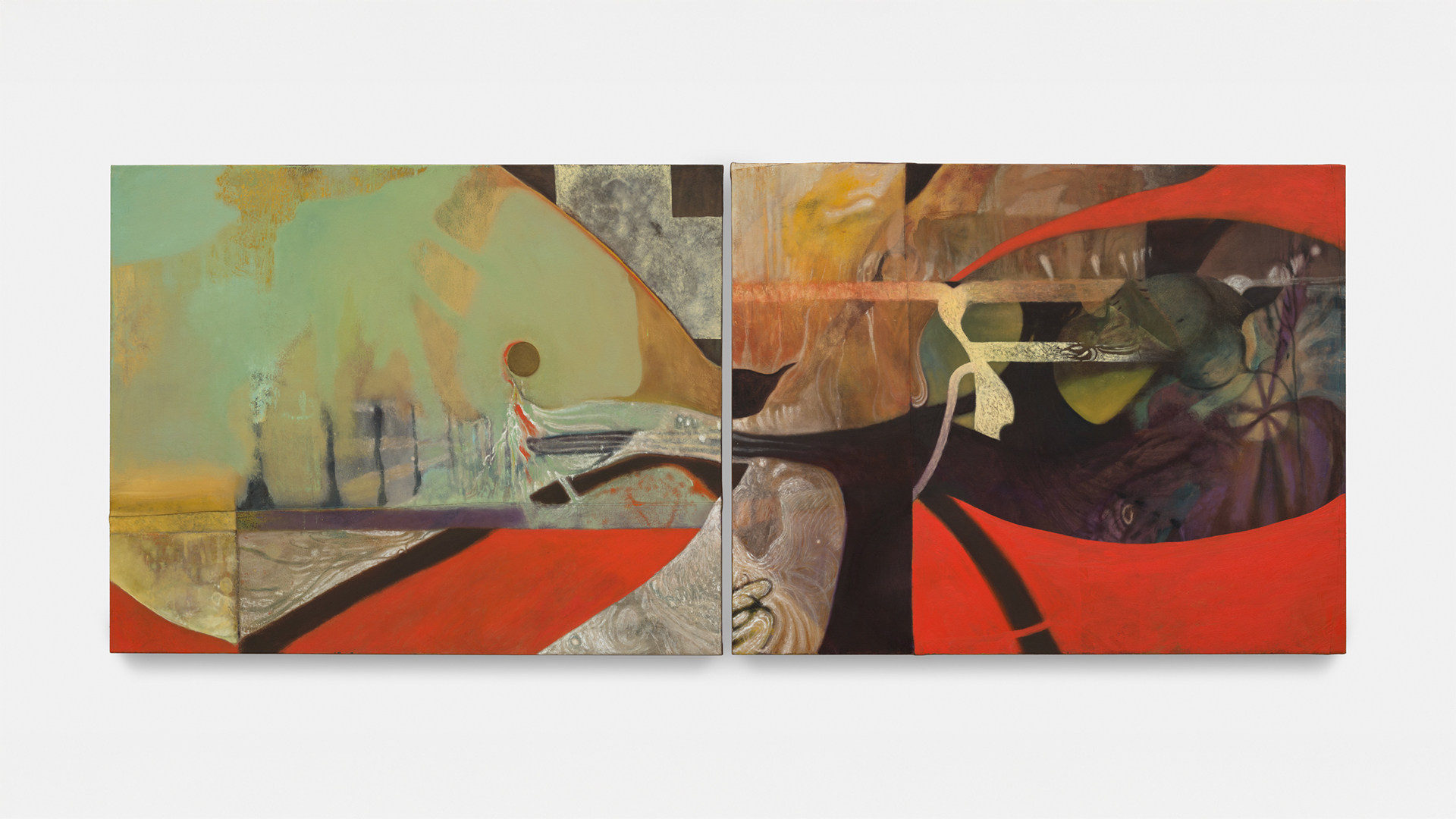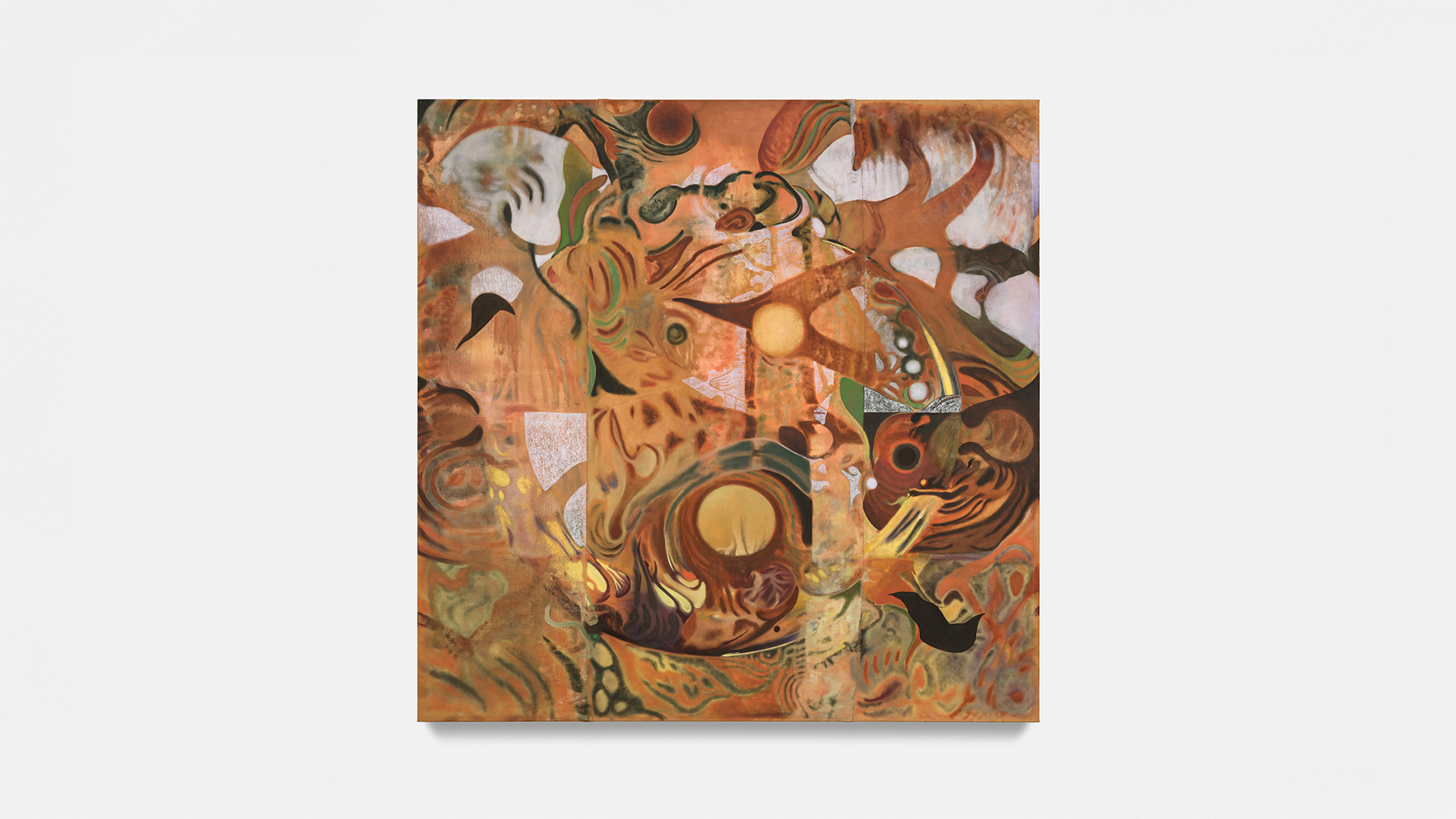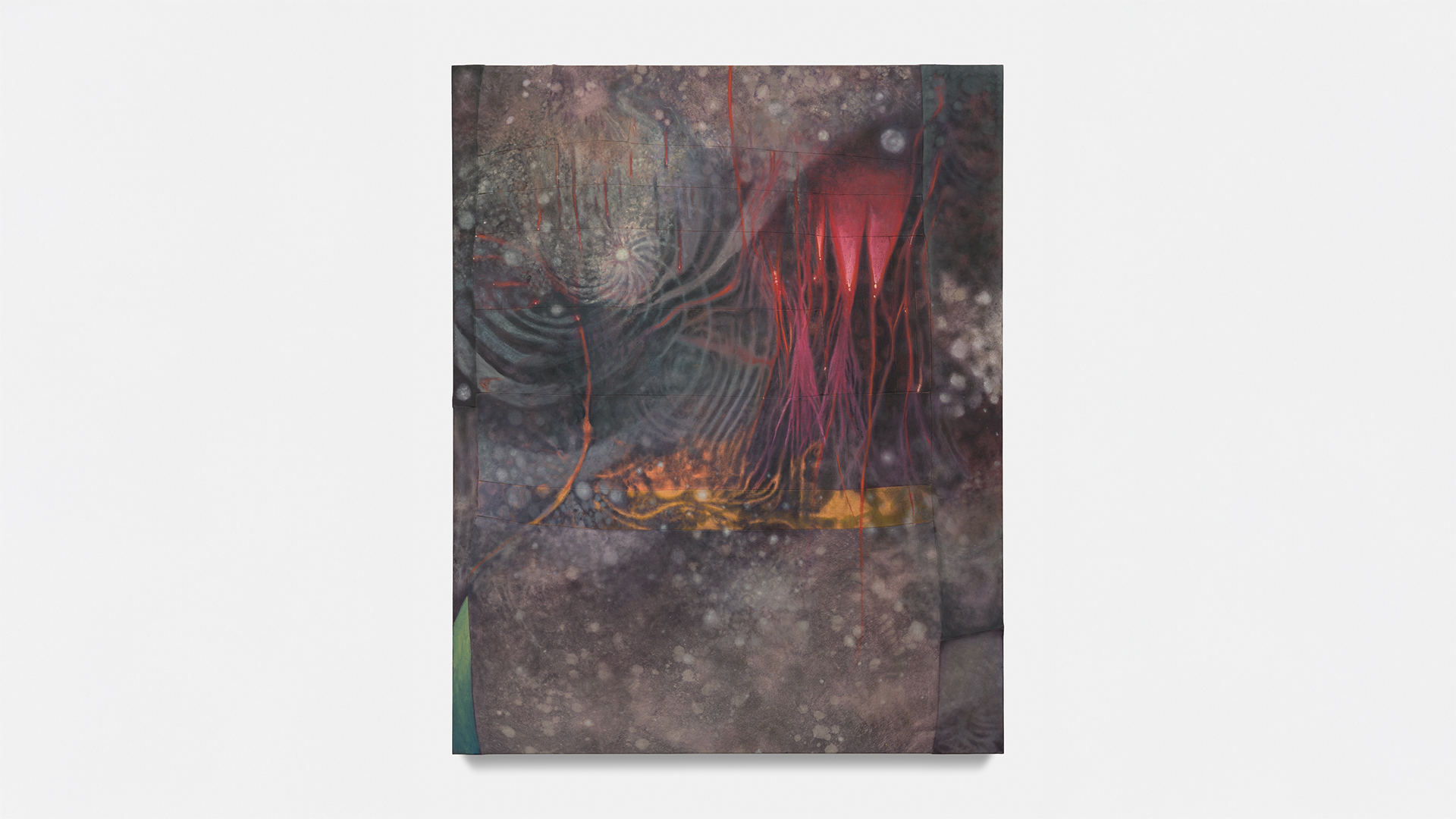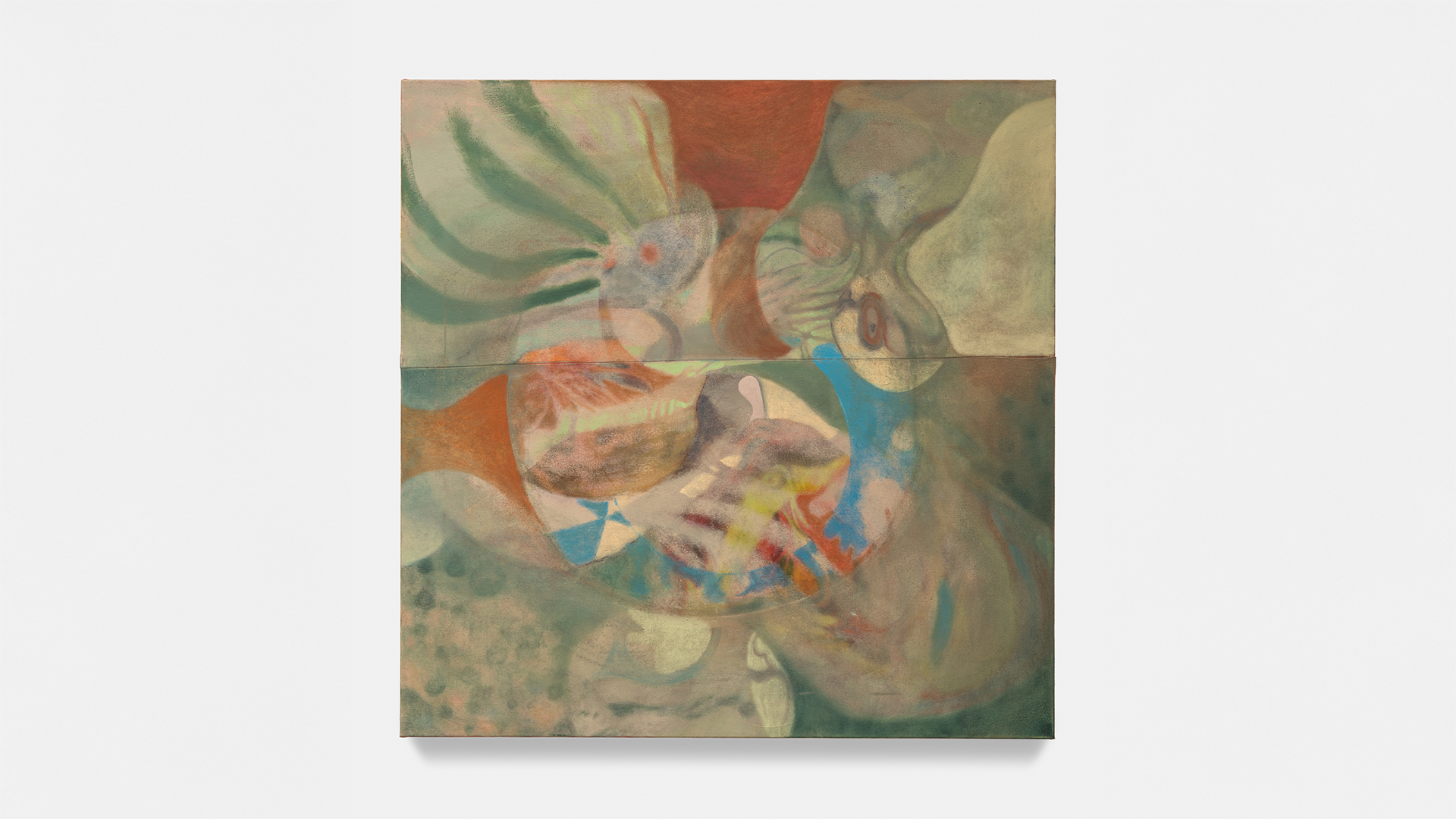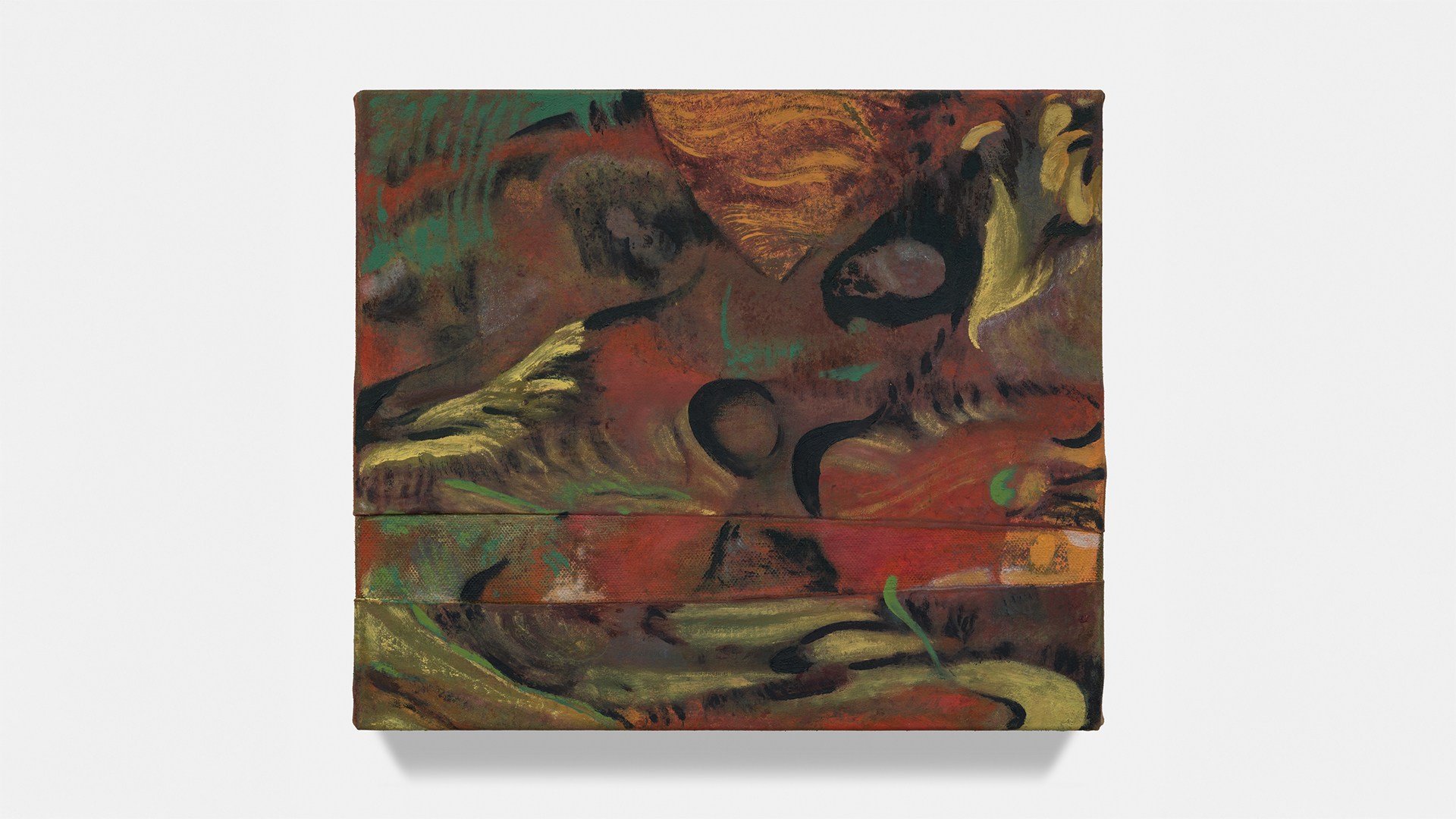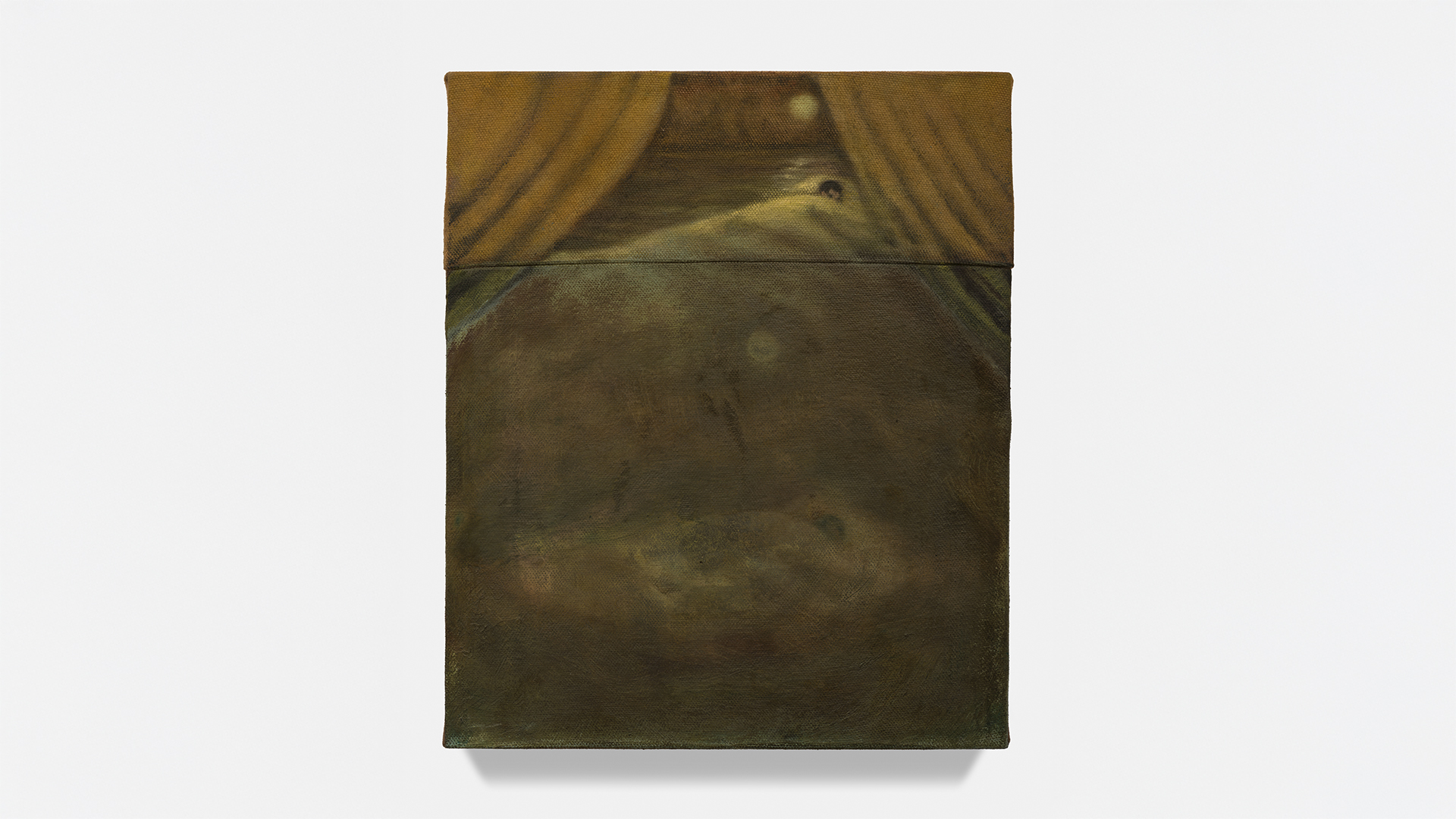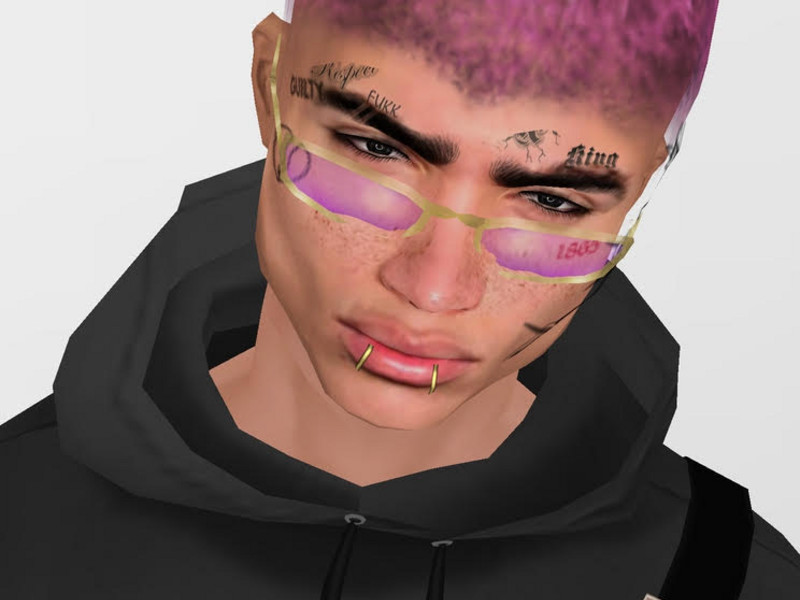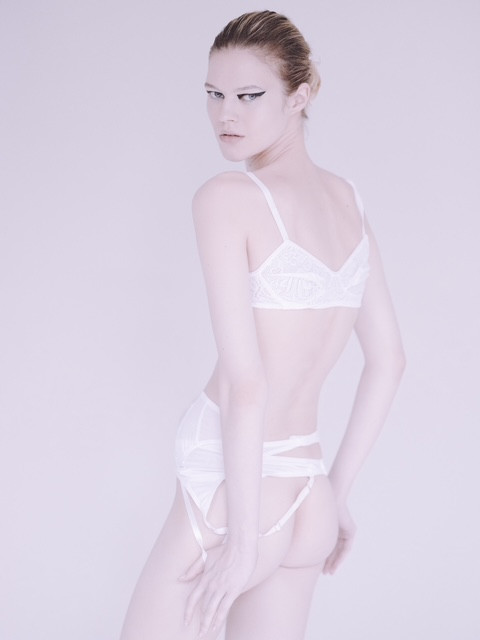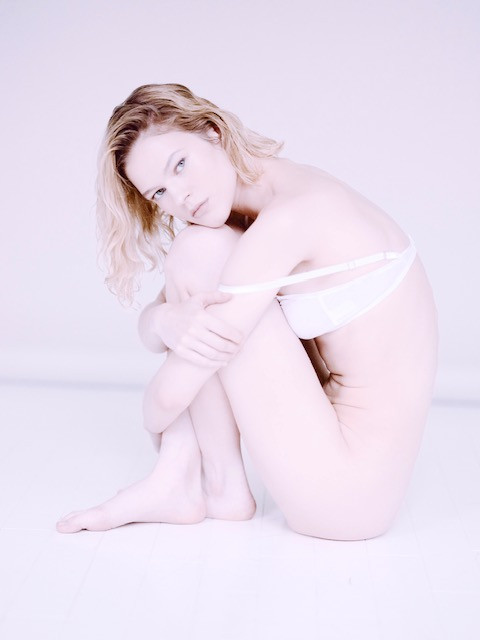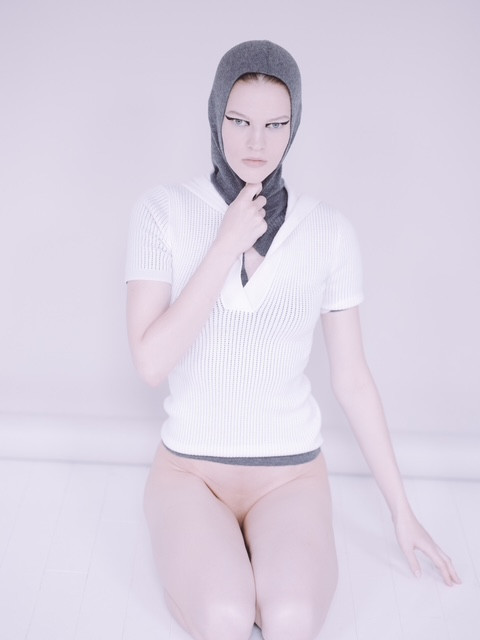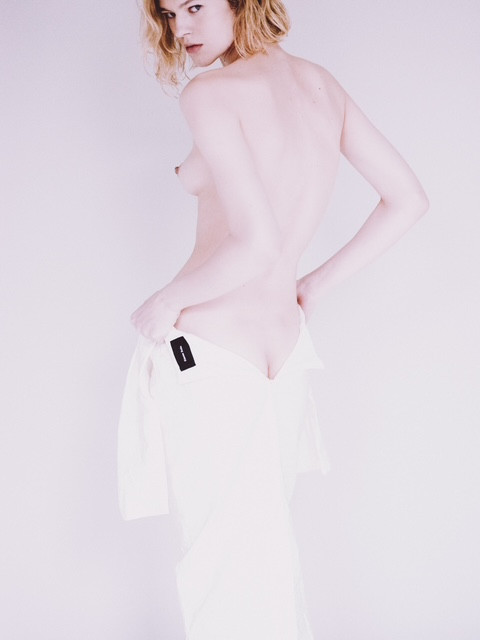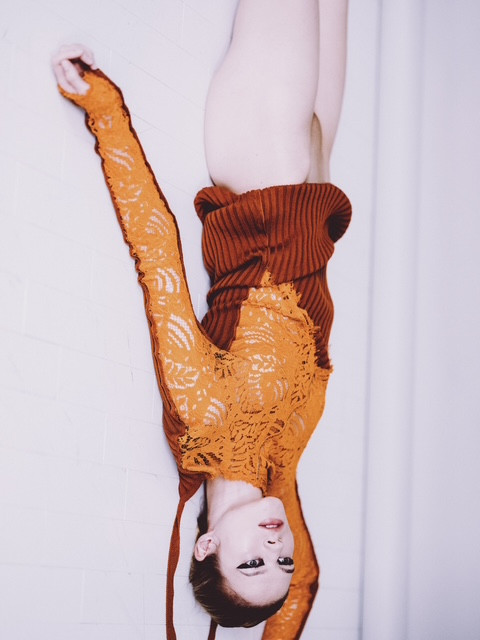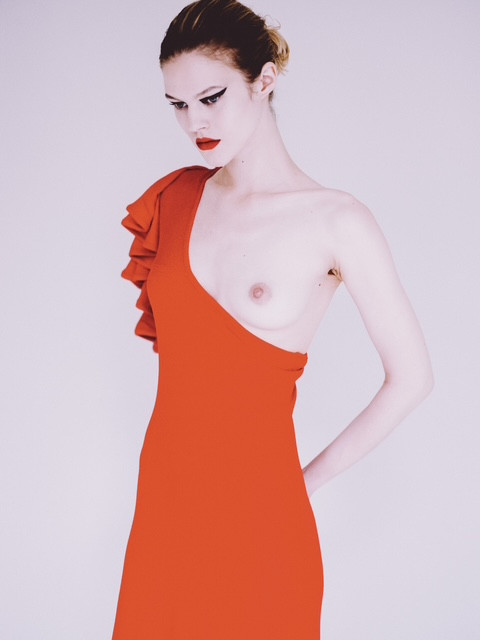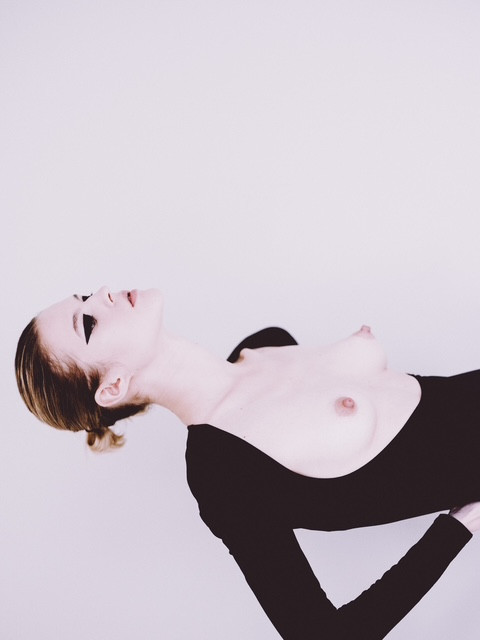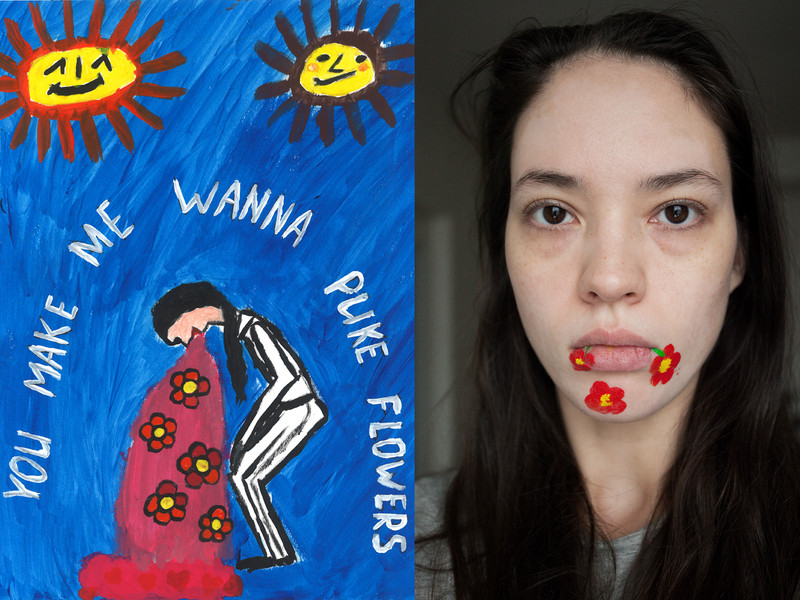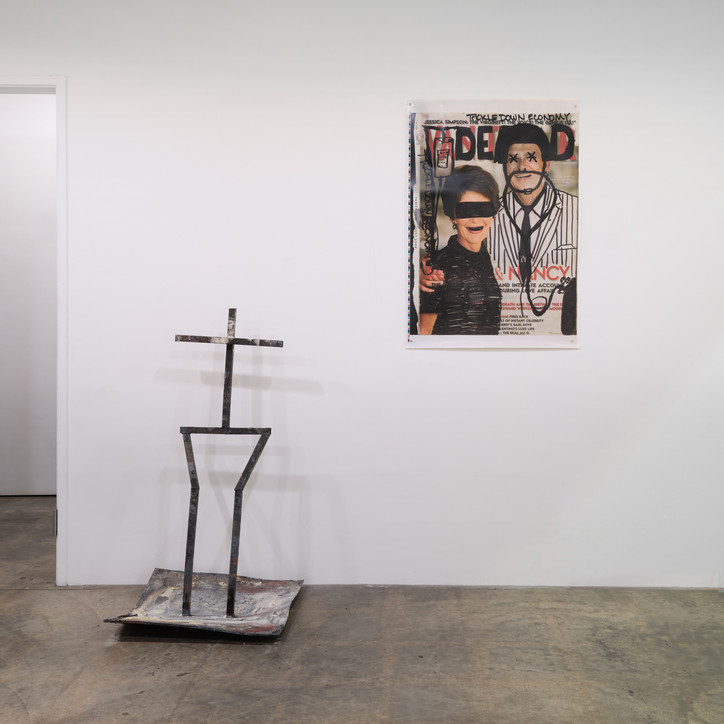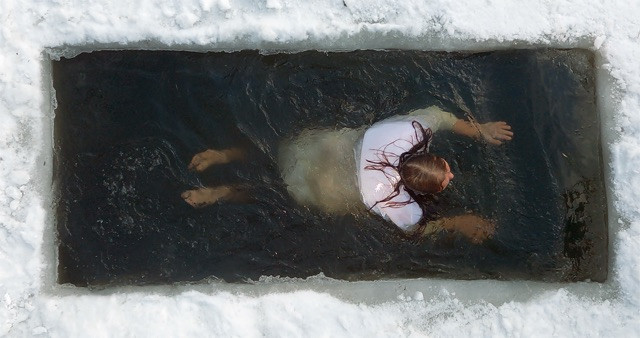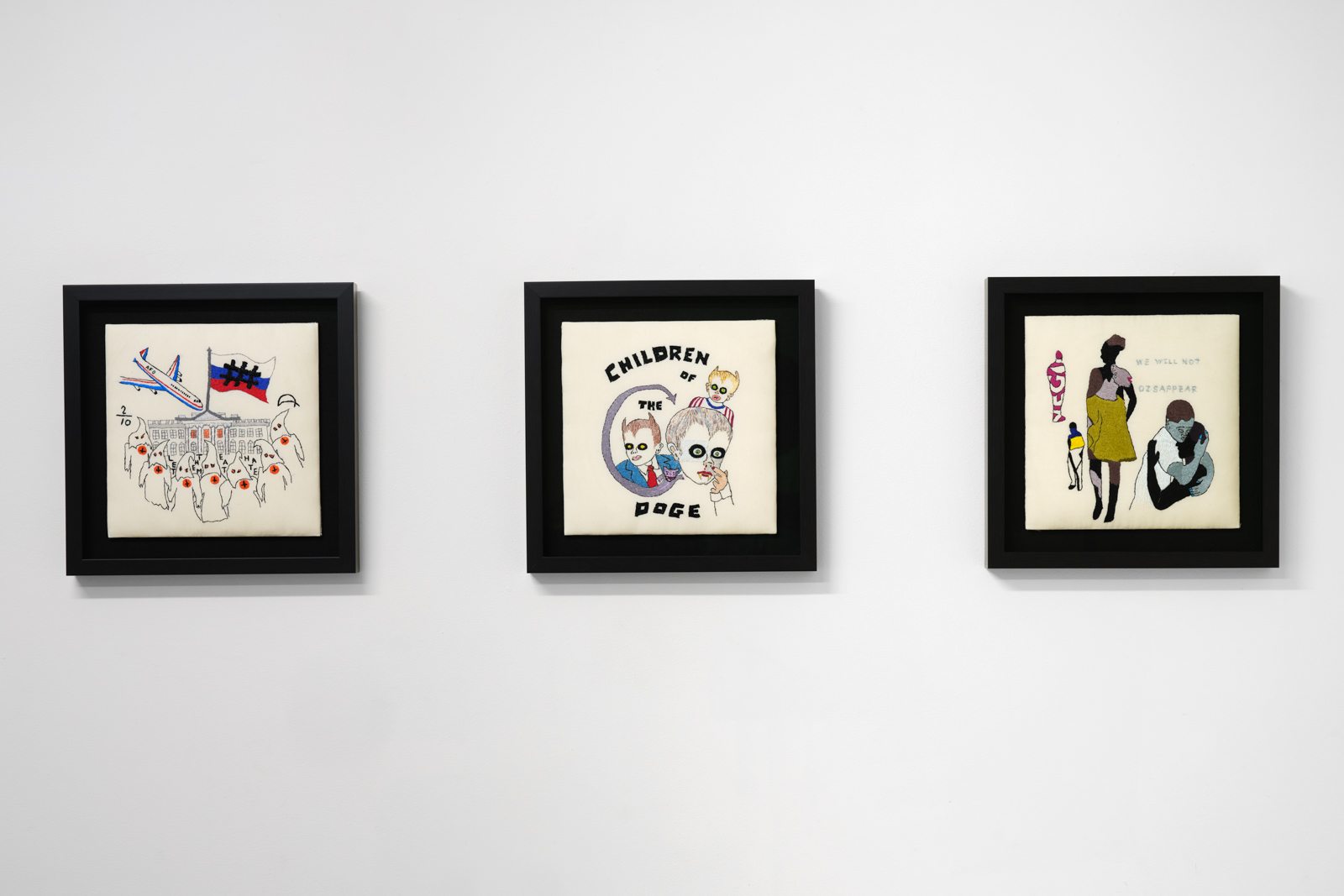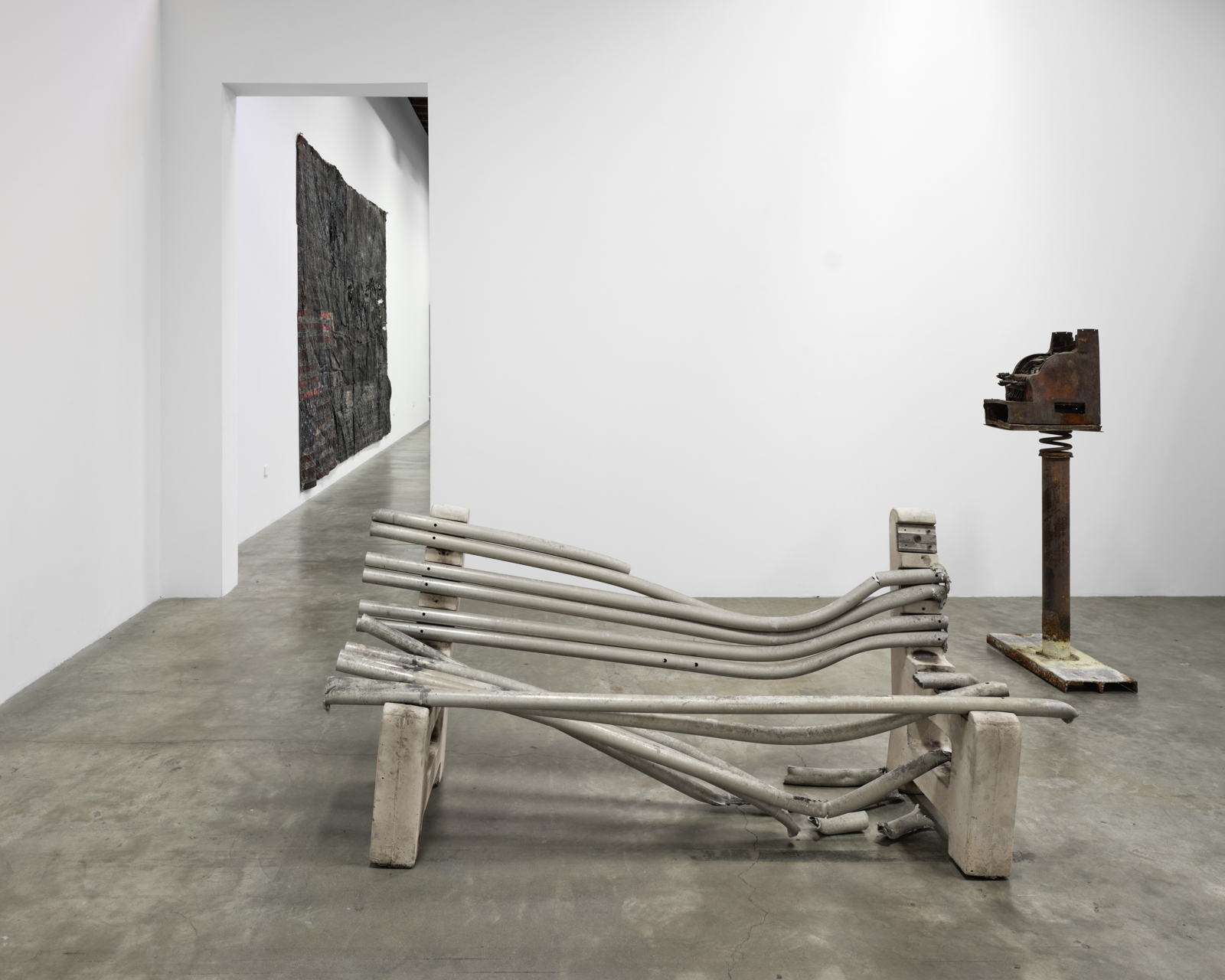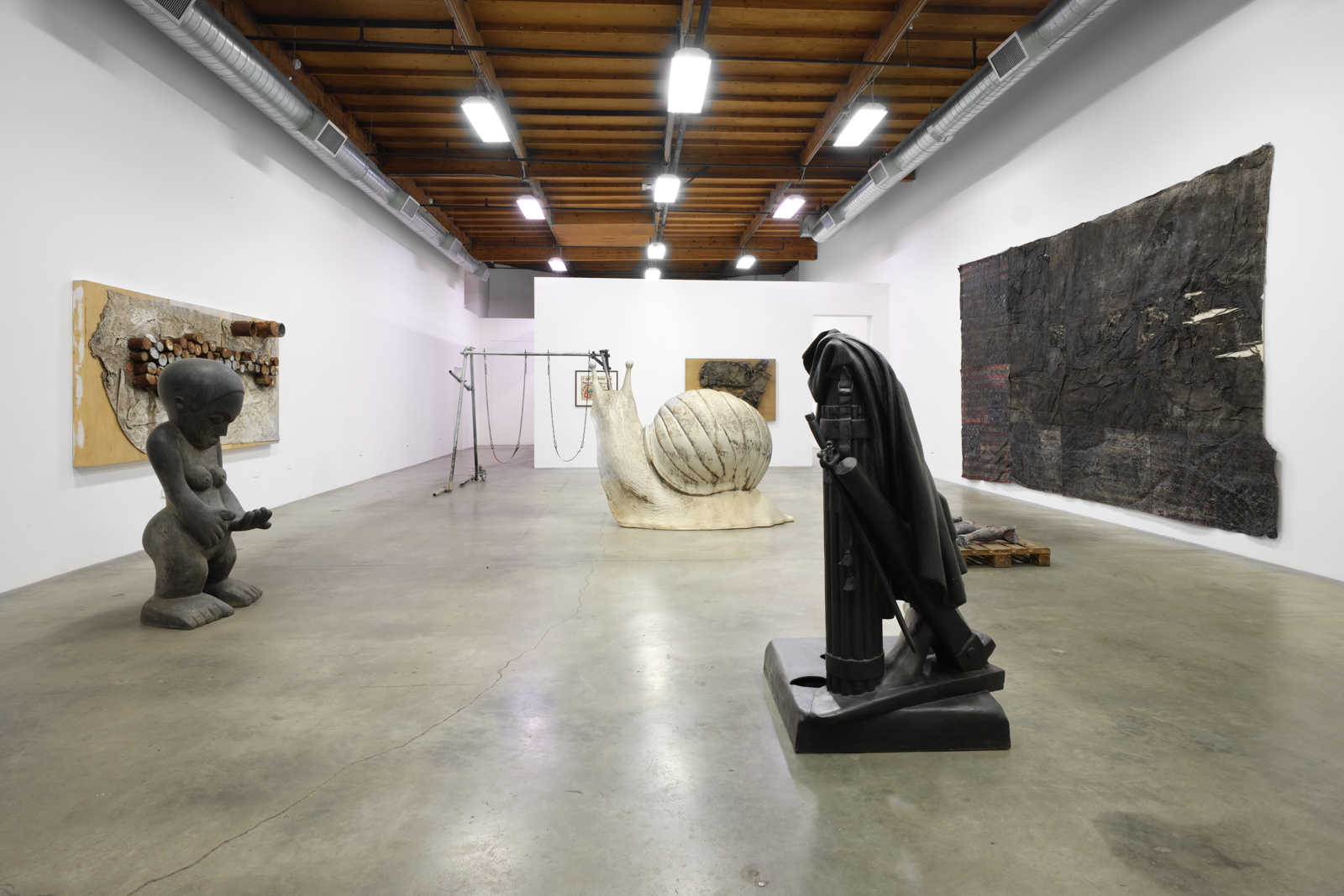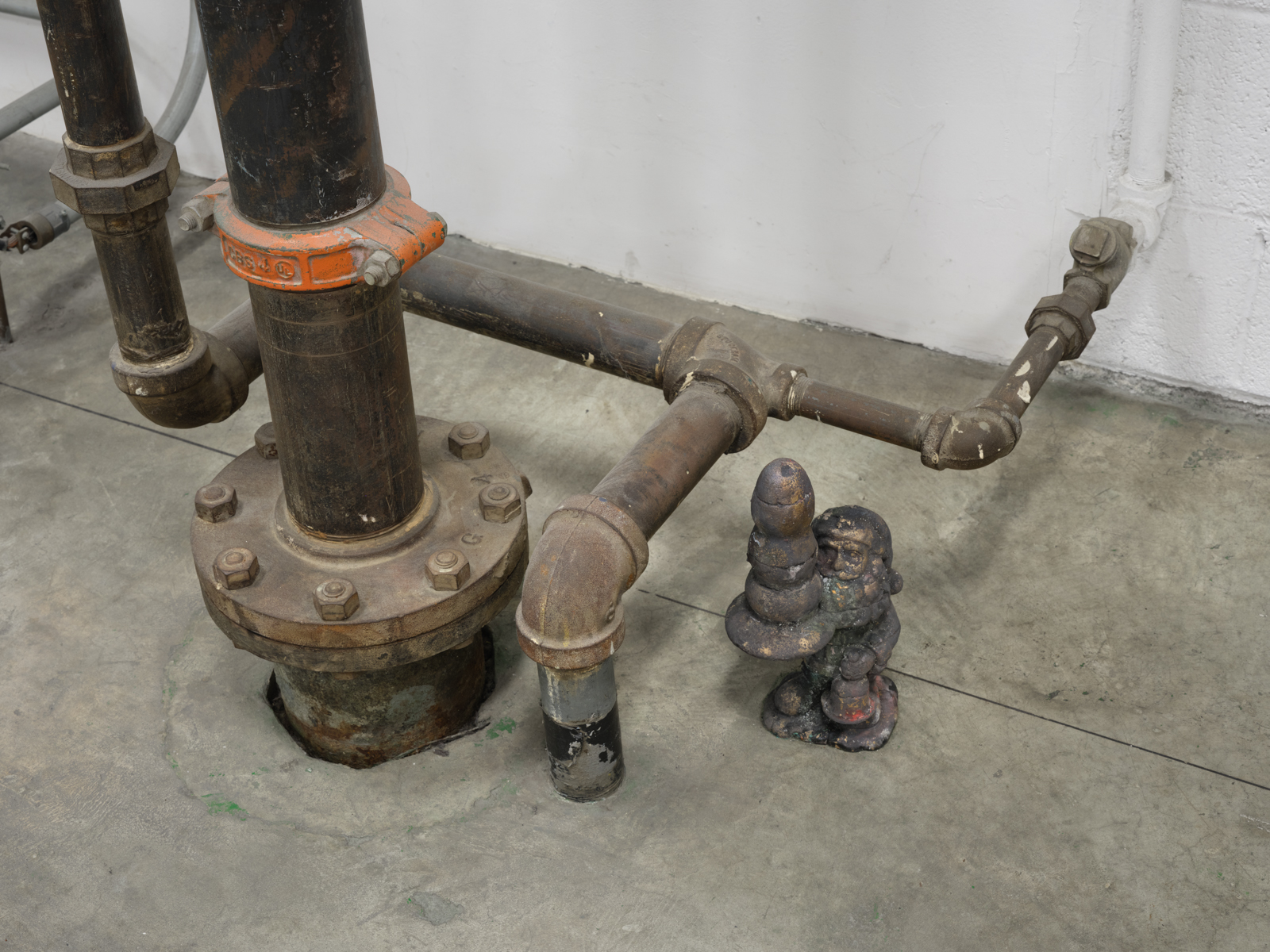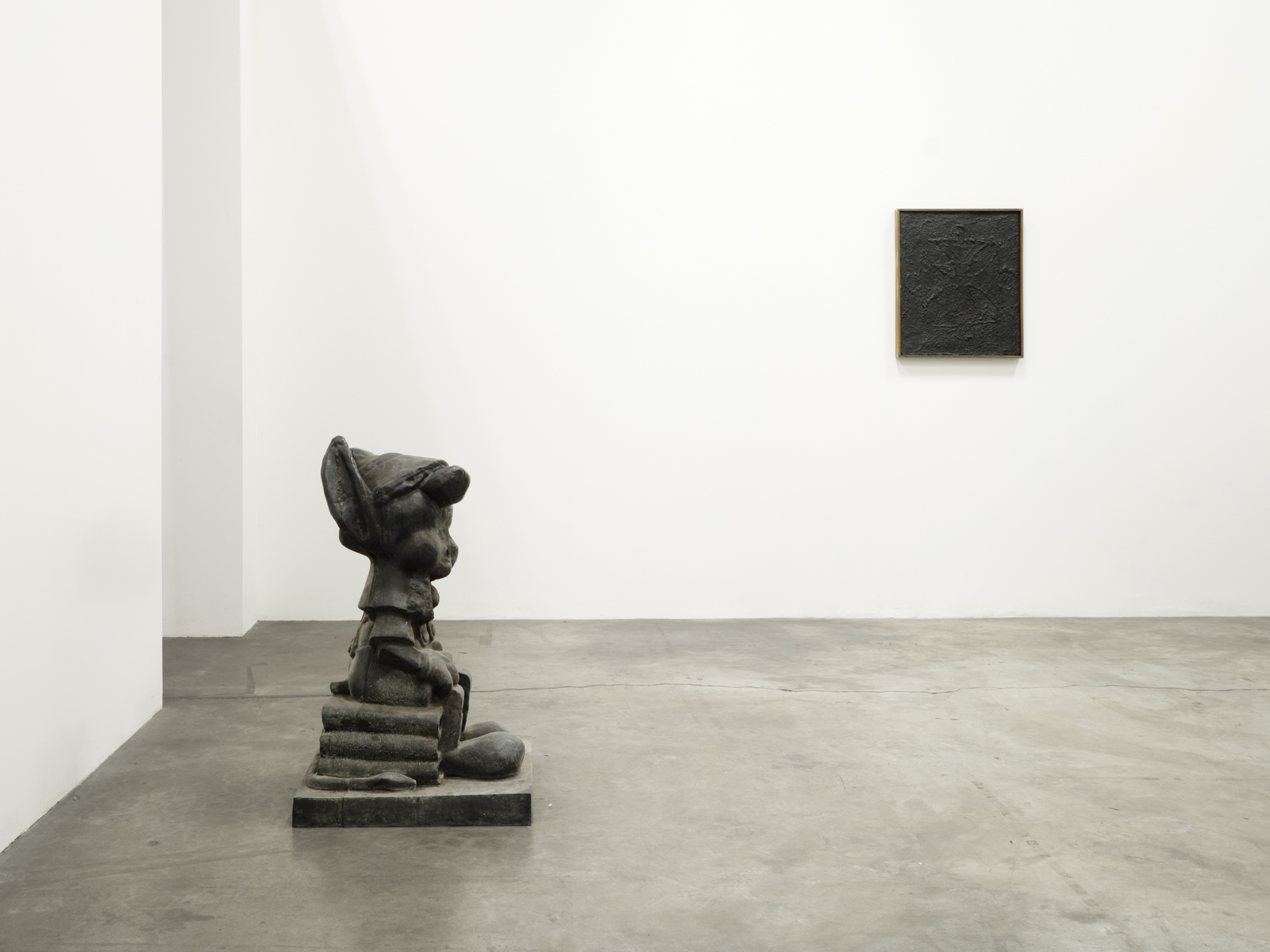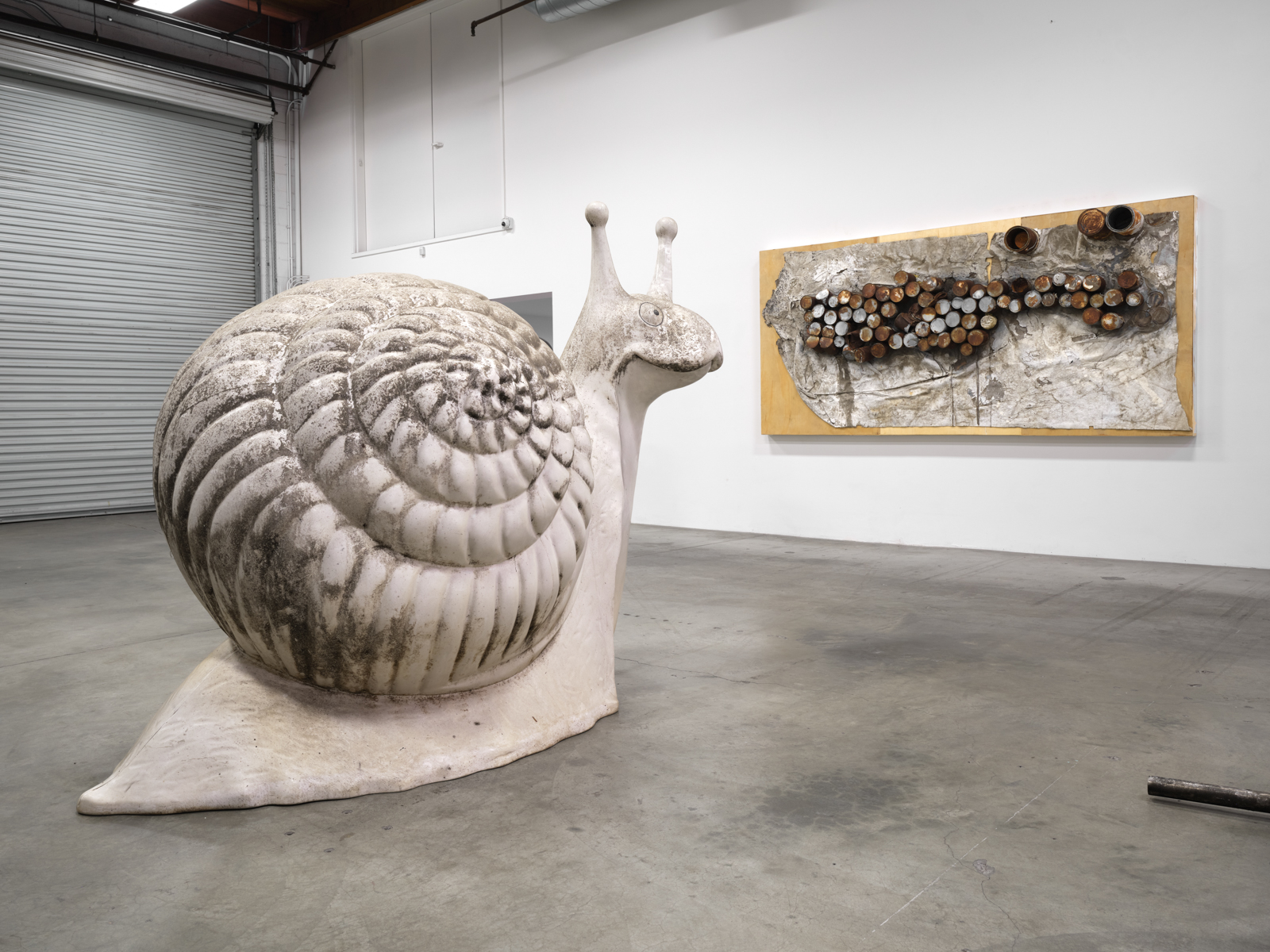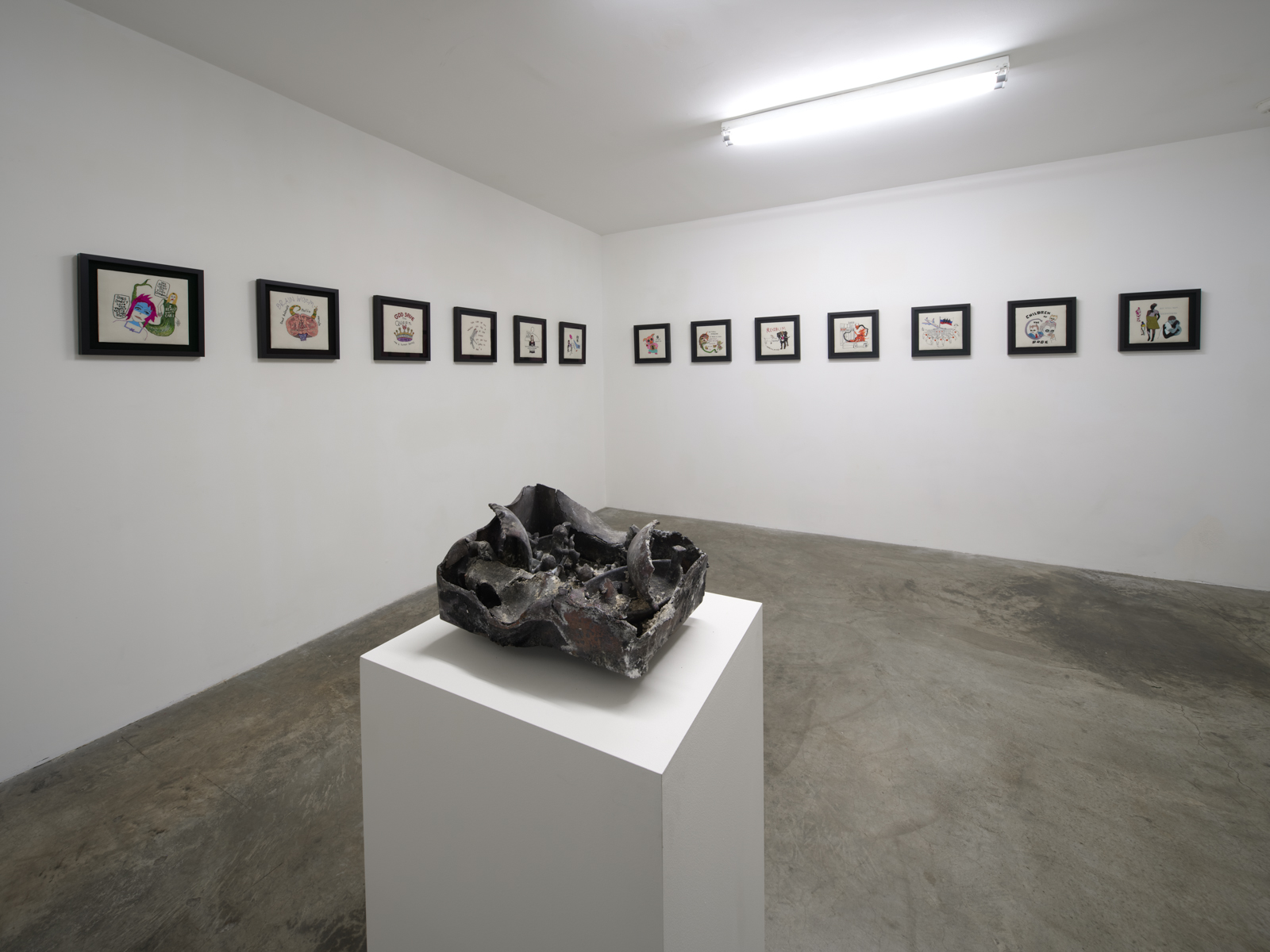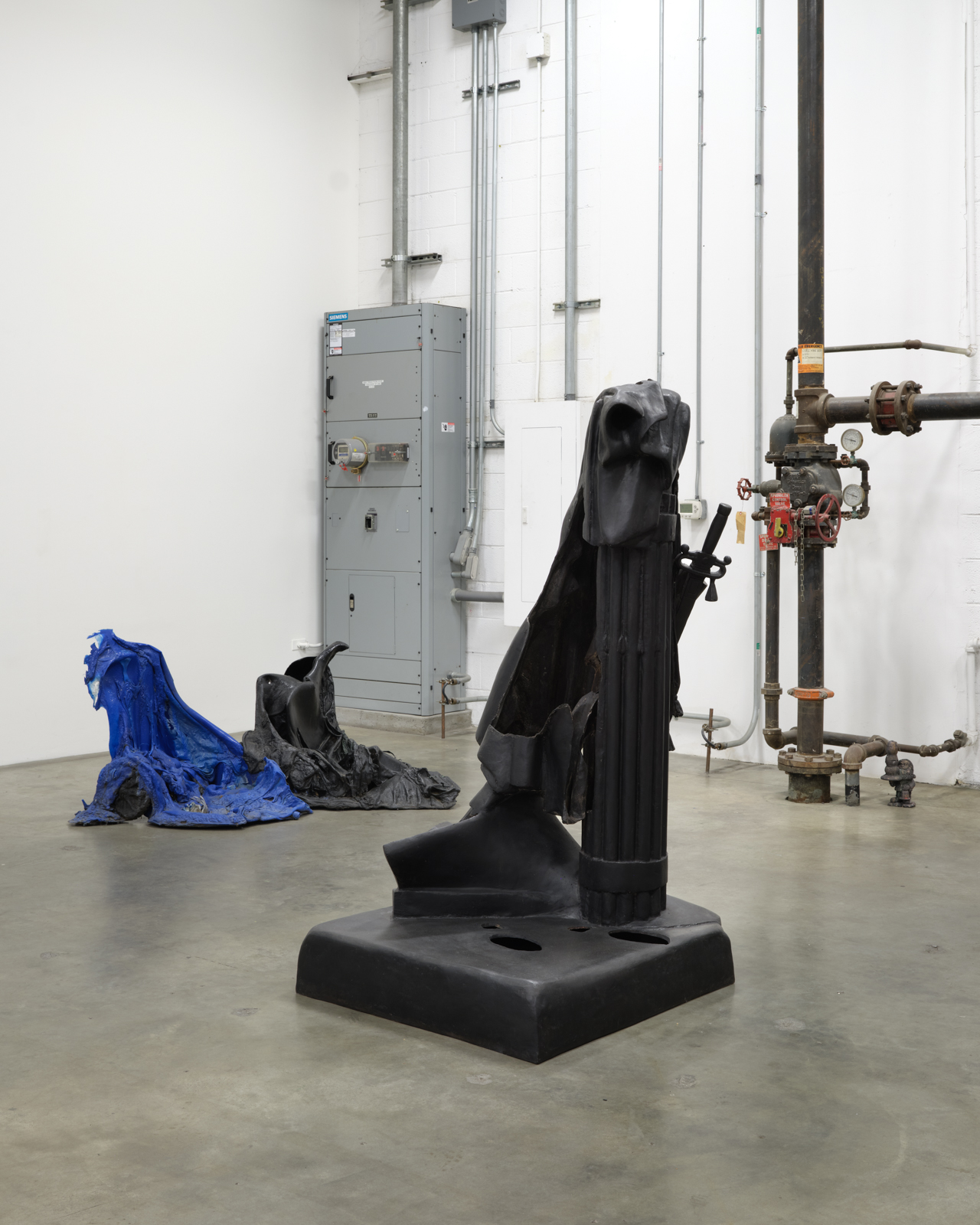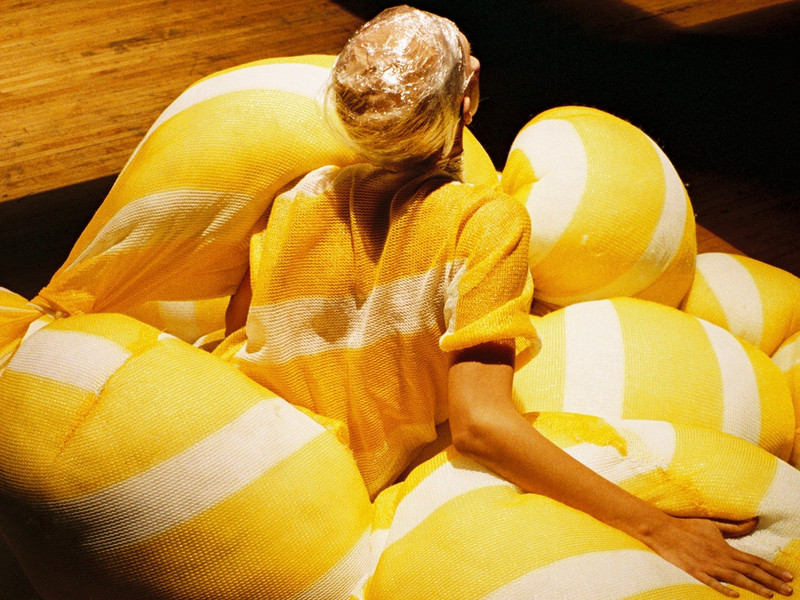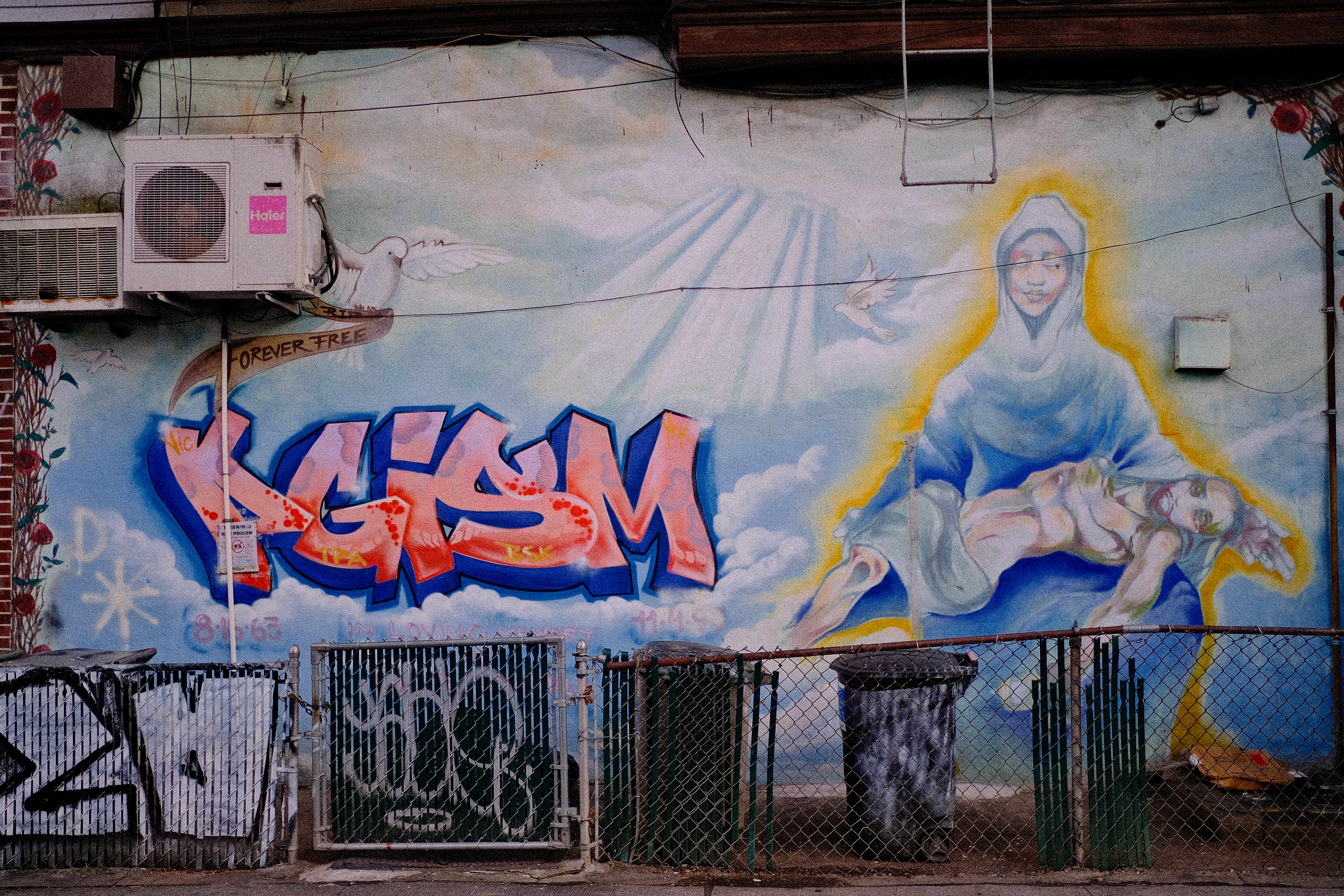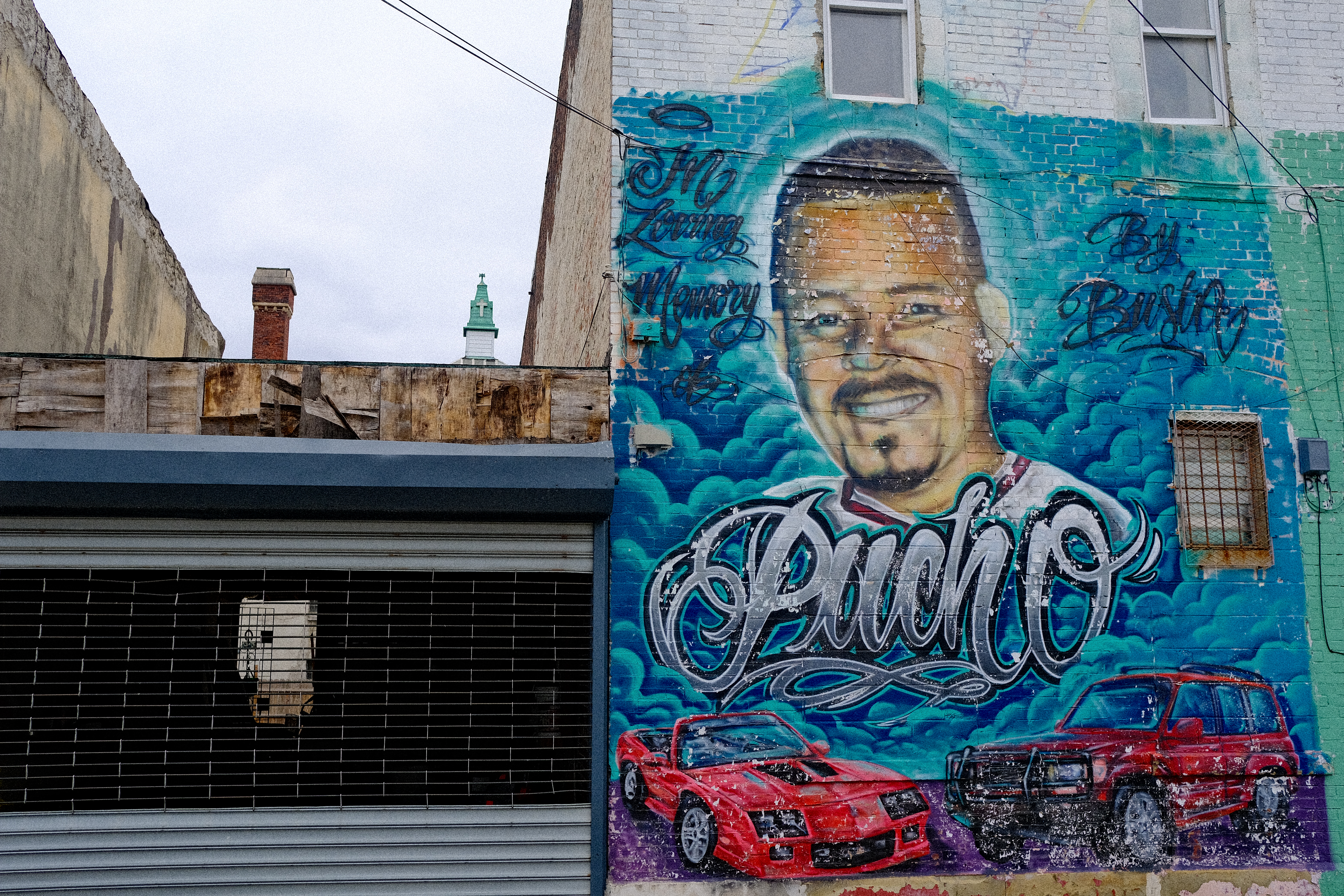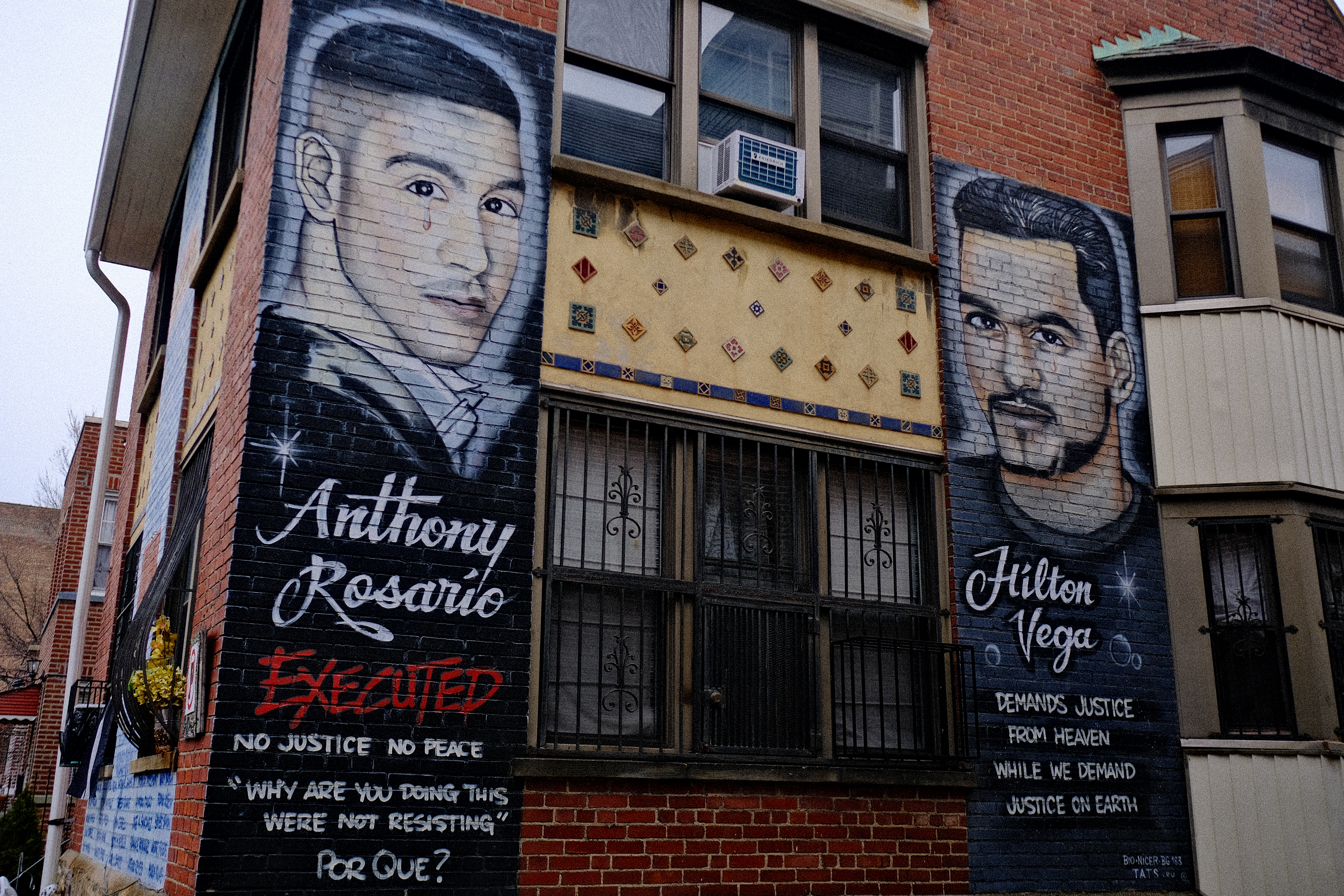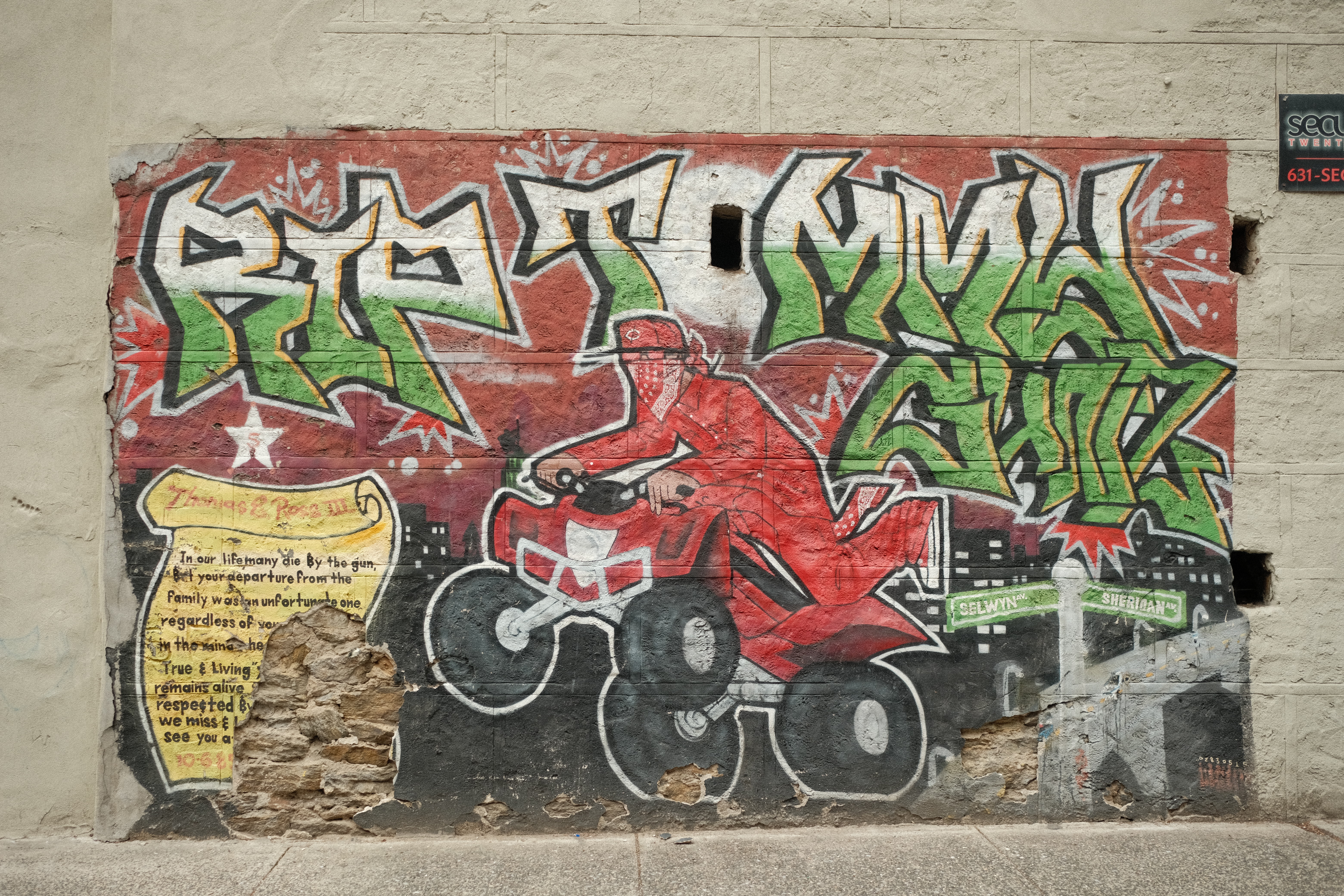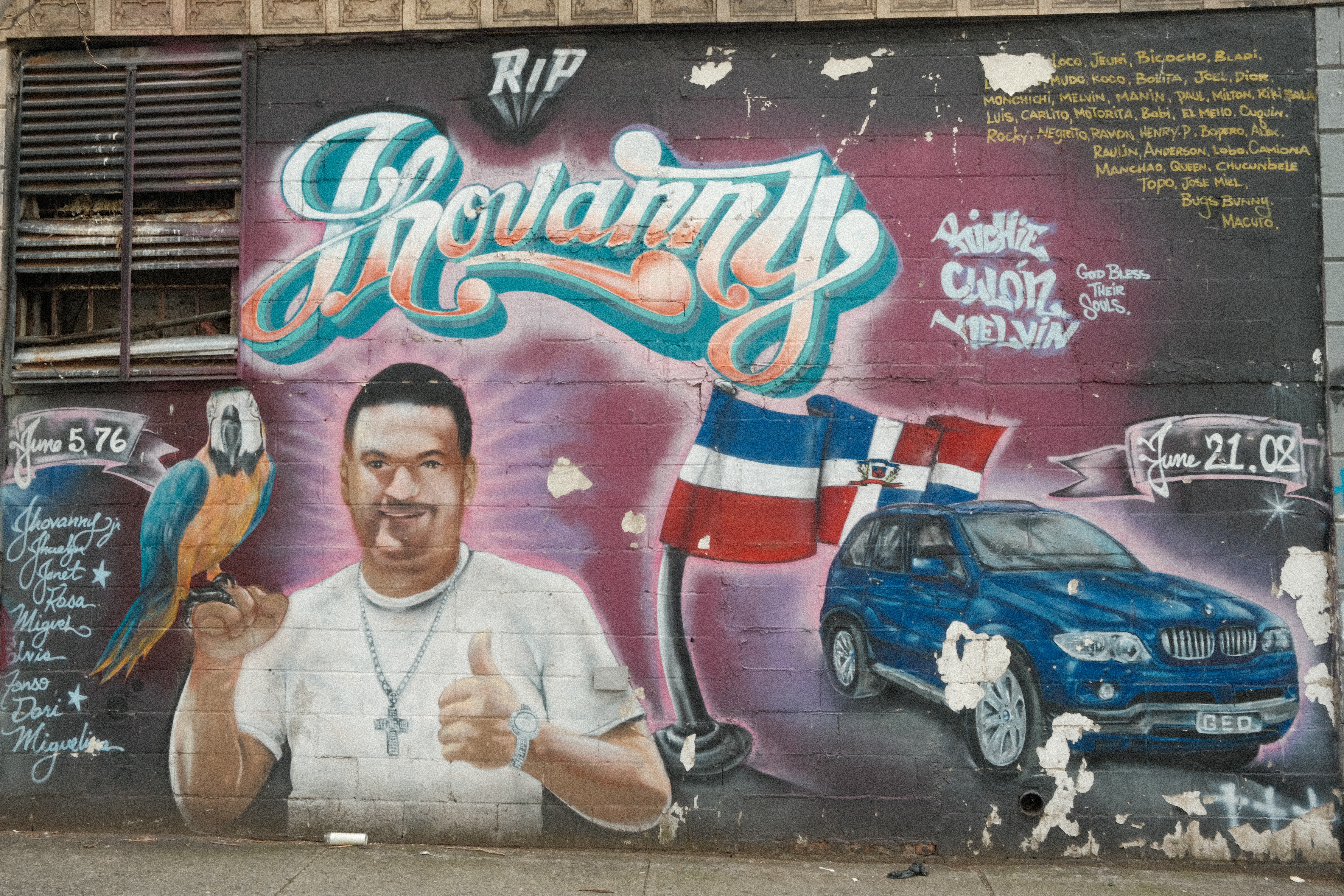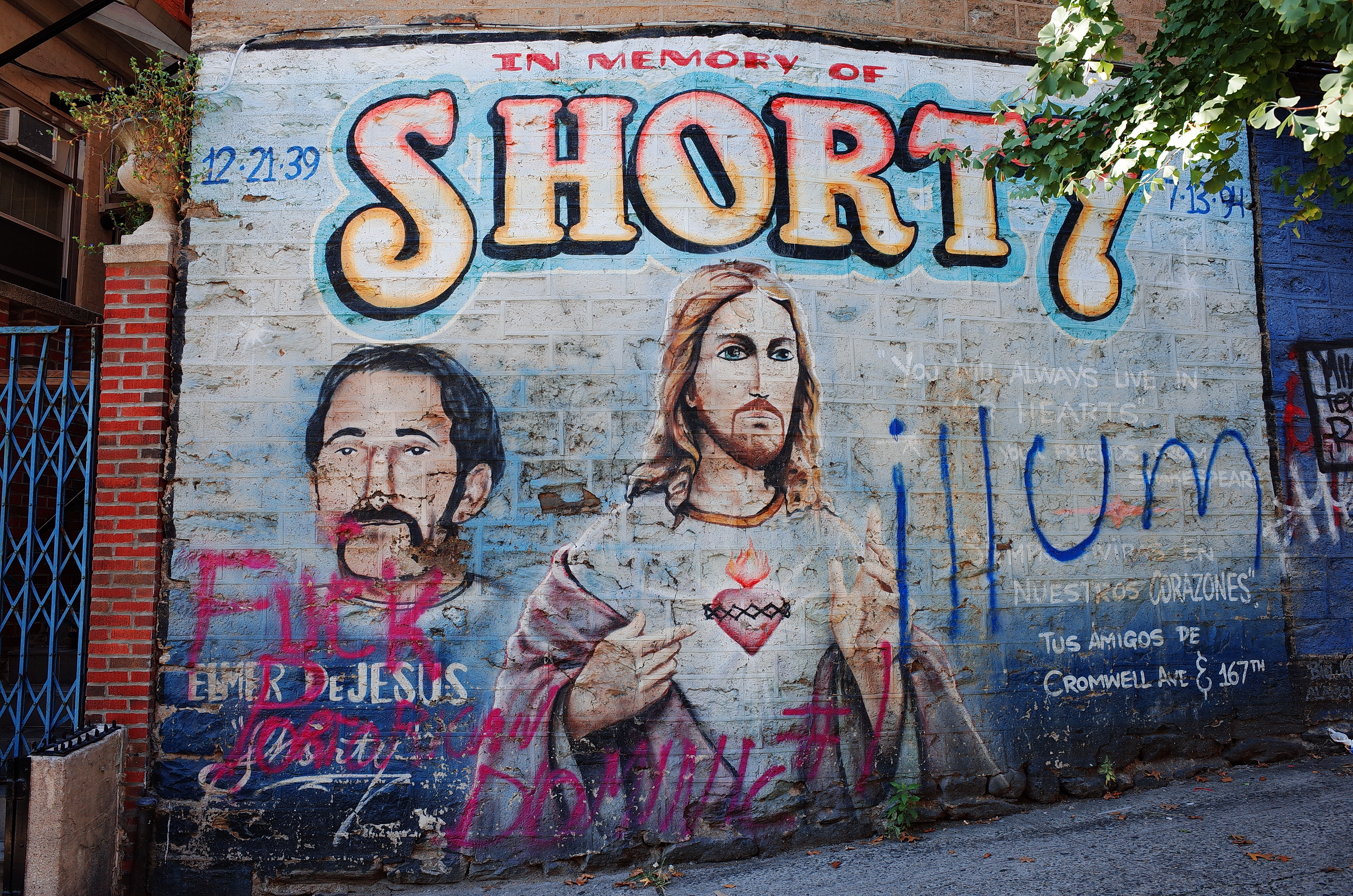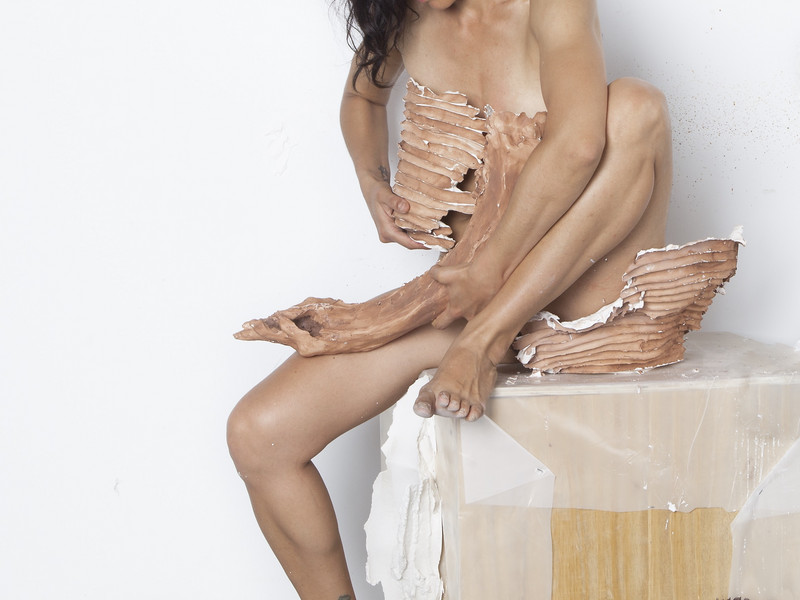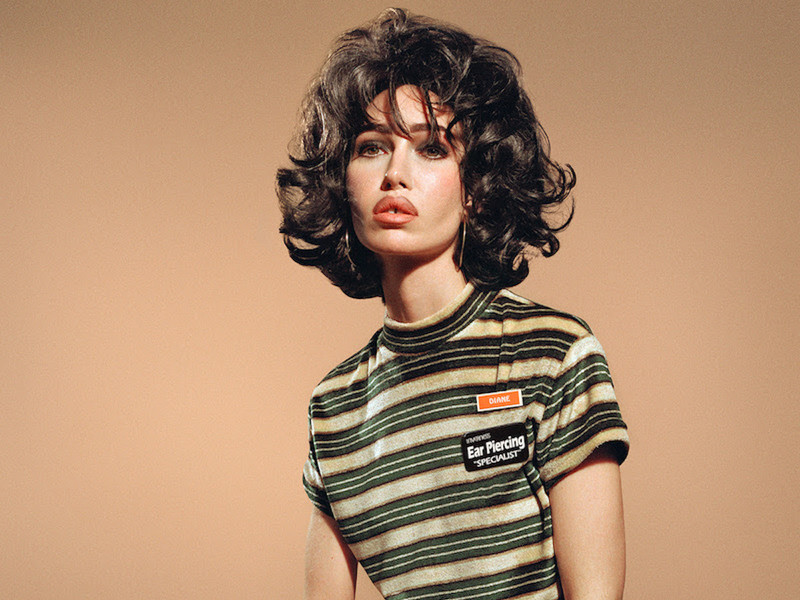Noah Schneiderman’s The Big Empty at EUROPA
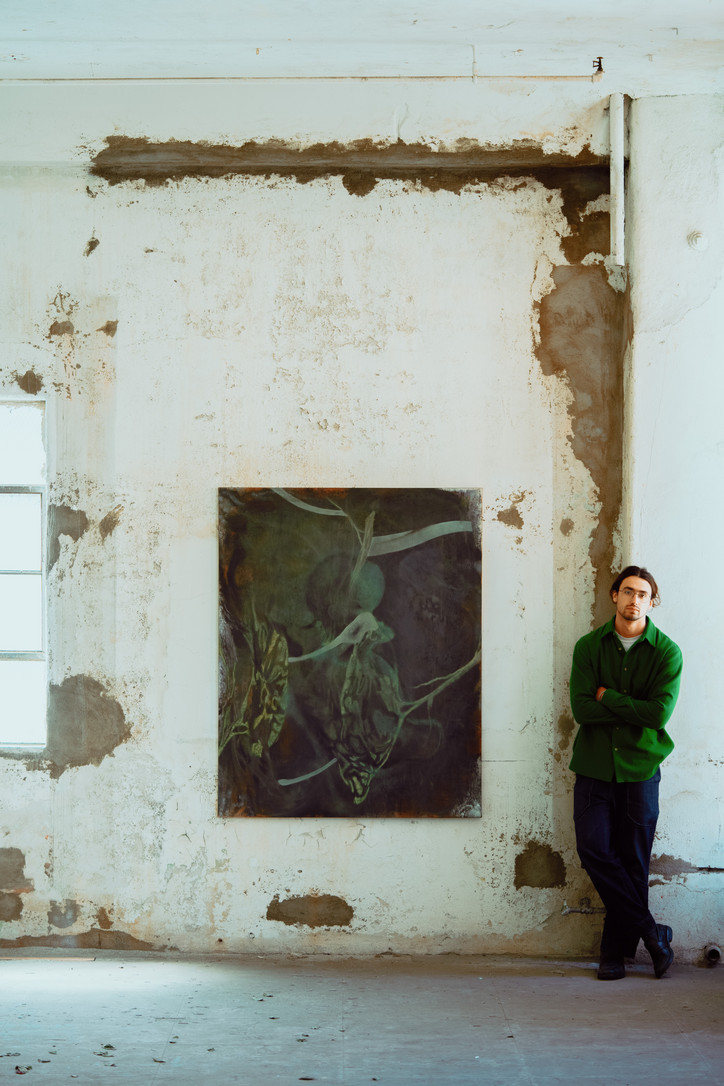
(Photo by Robin Hart Alexander)
A self-taught painter, Schneiderman likes to embrace the spontaneous interplay of materials. “The dyes create a pattern or an idea that I can later dissect or intervene with a brush,” Schneiderman tells Office in a recent interview. Plant dyes, which he encountered while working in a Denver boutique, introduce an element of chance into the process. Images and ideas often germinate organically, as Schneiderman’s materials mirror his own physical and emotional landscapes.
Contrary to the title’s implied minimalism, The Big Empty—a phrase borrowed from the country singer Coulter Wall—is activated by a potent kinetic charge. Some of the show’s paintings were made in a small Los Angeles garage before Schneiderman relocated to a larger space downtown. The frenetic energy reflects the cramped nature of the studio he was working in. Limited room and constant movement infused the pieces with urgency and tension, as if the paintings were pushing against walls.
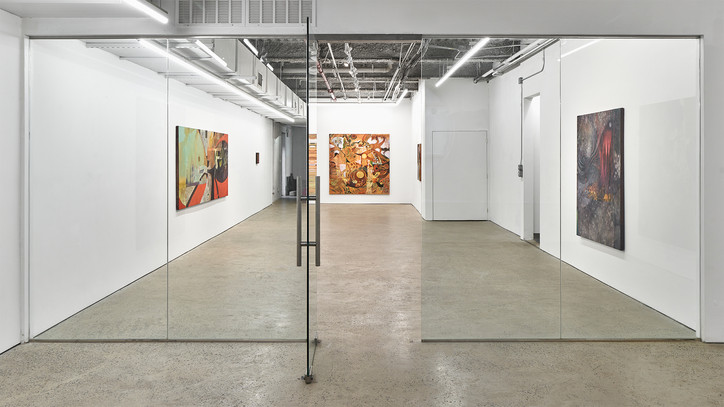
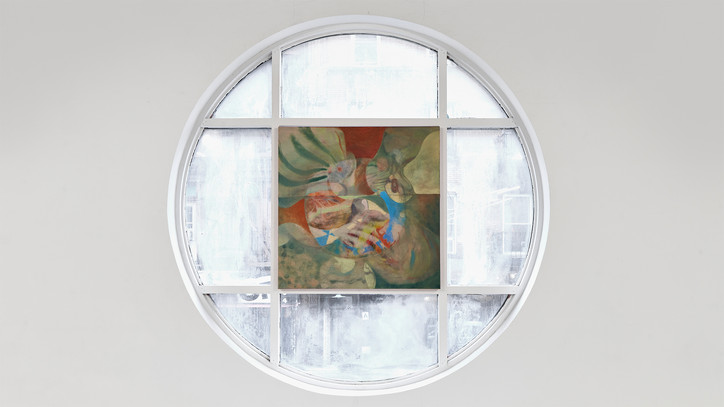
“I like to lay out all the paintings in my studio and see how they vibrate, how they talk to each other,” Schneiderman says. He prefers working on multiple pieces at a time to capture this emanating dialogue. His canvases are linked by a subconscious symbiosis, a quality that has attracted viewers seeking a harmonious connectivity with art. During the pandemic, Schneiderman’s work swiftly gained an online following; his paintings serve as portals into a shared space of introspection.
“A feedback loop starts to occur, and I start to notice how one painting might influence or inform another, ” the artist adds. Familiar shapes and patterns—concentric circles, opaque nebulae, and flexuous earthworm-like squiggles—recur across the canvases, contributing to a visual ecosystem fueled by a cross-pollination of ideas. Each painting is its own ethereal landscape of ecstatic forms, evoking cosmic explosions (How the Heart Unfolds), desert storms (Playing the Bones), lightning sprites (Visitor Map), and molecular fusion (Dweller on the Threshold). Schneiderman also had David Lynch’s catchphrase “Catching the big fish” in mind while painting The Miraculous Draft of Fishes, inspired by the director’s idea of meditation as a means to deeper creative expression.

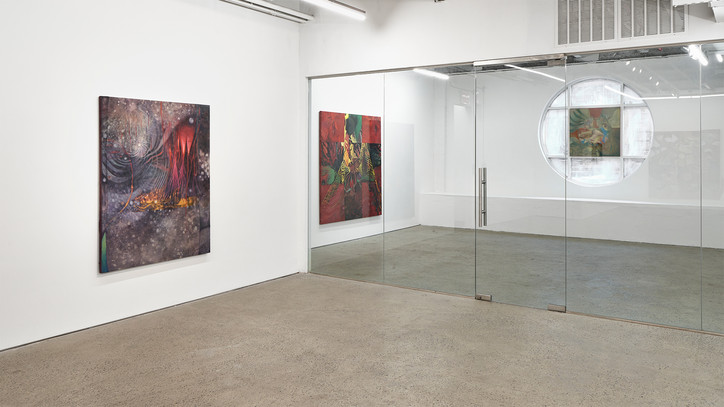
The large-scale canvases reflect a conceptual evolution for the artist, who has more recently shown in Italy and Switzerland. “Abstraction has always been a destination I’d wanted to arrive at,” Schneiderman says, “but I had to chisel away at my instinct to make references to get there.” There is an apparitional quality to a work like The Magician, which alludes to a figure hidden from view. Remnants of these specters haunt the canvases—a fishing net, a disembodied ear, a snow-covered forest—but Schneiderman’s interest lies beyond the recognizable. His works are imbued with a latent spirituality that bridges the ecological and the transcendental.
“I think about ‘the big empty’ as this location or headspace, a kind of collective unconsciousness, where ideas exist and are exchanged,” he says. The painter, then, is like a medium, divining vibrant, imaginative visions from plant matter and pigment.

